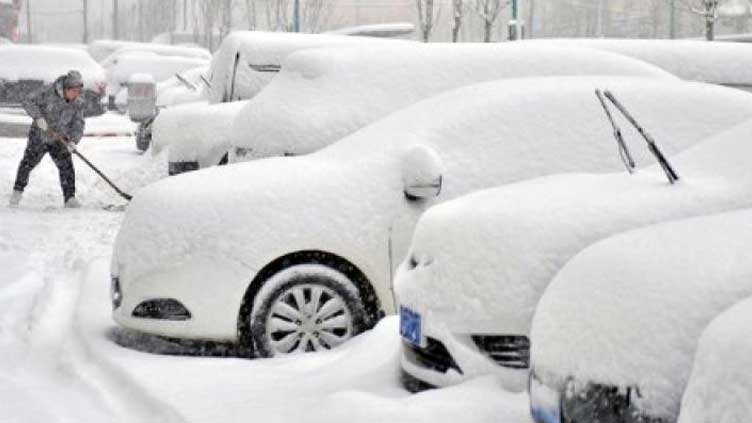Biting cold to loosen grip as temperatures to creep higher in China

World
Northern and northeastern parts of the country have experienced blizzards
BEIJING (Reuters) - After almost two weeks of below-freezing weather brought by a cold wave that swept through most of China, a round of warm air will begin to flow from the country's north to south lifting temperatures from the weekend.
Northern and northeastern parts of the country have experienced blizzards and record-breaking cold since last week, with some areas in the northeast hitting minus 40 degrees Celsius (minus 40 degrees Fahrenheit) and below as bitingly cold air flowed from the Arctic.
While China still forecasts new temperature lows this week, weather patterns will improve with the mercury rising to reach over 10 C (50 F) in many places in the central and eastern regions on Monday, state television CCTV said.
The warmer conditions are expected to last until the end of December, resulting in warmer-than-usual temperature in most parts of the country for this time of the year.
In northern Tianjin, its meteorological department said temperatures will slowly rise from Saturday, with Sunday's high above 0 C (32 F) and a minimum not lower than minus 10 C (14 F). Forecasts show Tianjin to hit a maximum of minus 2 C (35 F) for Friday.
However, the warmer weather may fluctuate due to interspersing cold air, CCTV said, advising the public need heed forecasts and dress accordingly.
Eastern province Shandong's observatory warned on Friday of temperatures as low as minus 20 C (minus 4 F) in some mountainous areas in the province's northwest.
This week, China's north including capital Beijing, its surrounding Hebei and Tianjin, Henan, Inner Mongolia, and northeastern provinces Liaoning and Heilongjiang have logged historically their coldest temperatures for the middle of December.
Temperatures in some of these areas and also in parts of the south will be 5 C (41 F) cooler than the usual from Friday to Monday, China's National Meteorological Center said.
In China's financial hub Shanghai, temperatures in most parts of the city on Friday morning ranged from minus 6 C to minus 4 C (21 F-24 F), breaking seasonal records.
In Beijing, city authorities rushed to fix a leak in a thermal pipe network that supplies heating to buildings in central Dongcheng district.
Repair work for the section leaking, discovered before dawn, halted some traffic but did not affect residential users, the official Beijing Daily said.
Across China, heating demand has risen as many northern provinces rewrote records after temperatures plunged below minus 30 C (minus 22 F) in some cities. Peak electricity loads were up by 100 million kilowatts on last year's high, the official Xinhua news agency reported on Thursday.
This equated to an increase of around 8.6%, Reuters calculations based on data from China's state planner showed. But ample heating fuel stocks from bumper production mean China has not needed to ramp up imports of coal and natural gas to meet the record power loads, according to traders.


